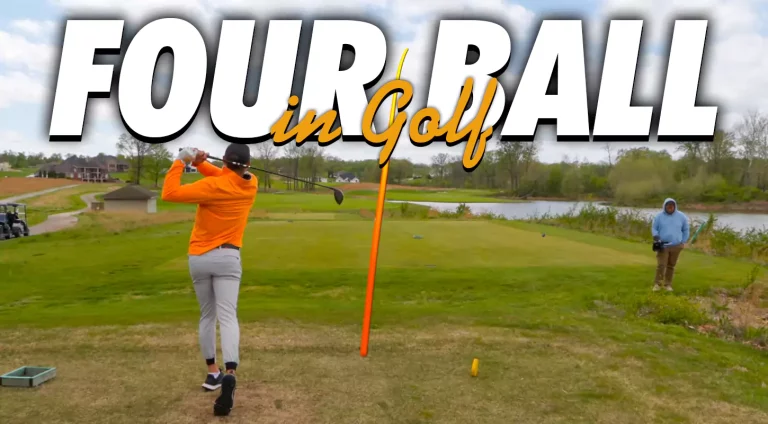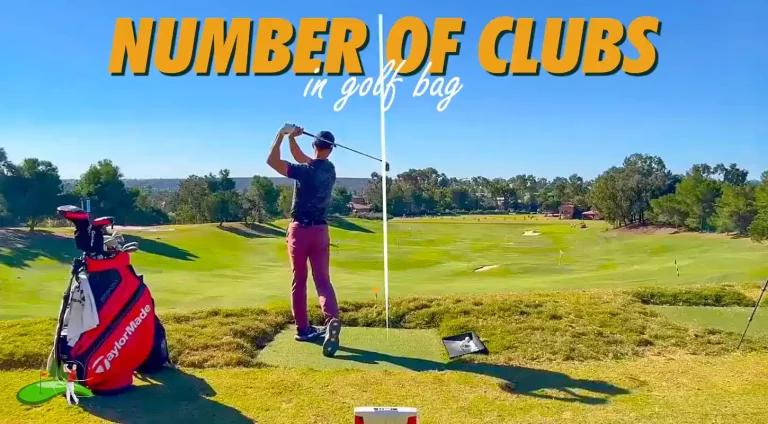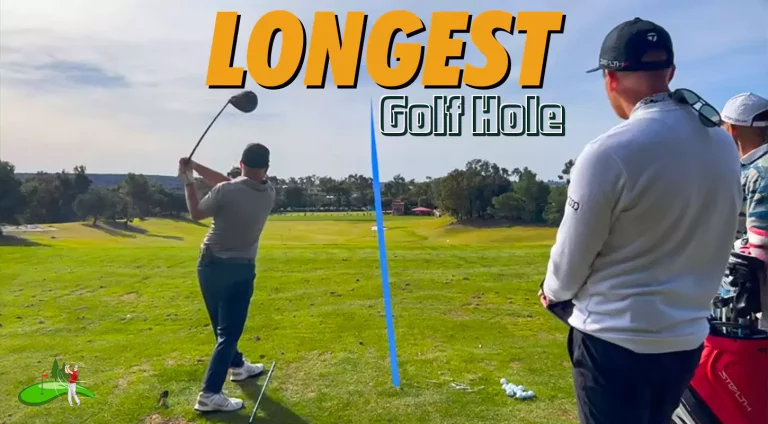What is a Flyer in Golf?
In golf, a “flyer” refers to a shot where the ball travels farther than expected. This is due to the clubface coming into contact with the ball on a thin or “clean” lie. Such as when the ball is sitting up on long grass or in the rough.
Flyers can be both beneficial and detrimental to a golfer’s game. As they can lead to longer shots and potentially better results. But they can also cause a shot to miss its intended target and end up in a less desirable location on the course.
What can cause a flyer in Golf?
A flyer in golf is caused by a combination of factors related to the lie of the ball and the club’s impact with the ball. The primary factor is the lie of the ball, which refers to how the ball is sitting on the ground.

If the ball is sitting up on long grass or in the rough, there is less resistance between the clubface and the ball. This can cause the clubface to slide underneath the ball and launch it higher and farther than expected. This is because there is less grass between the ball and the clubface. Which reduces the amount of friction and allows the club to impart more force onto the ball.
In addition to the lie of the ball, the swing speed and angle of attack of the golfer can also play a role in producing a flyer. A faster swing speed and a steeper angle of attack can increase the amount of force applied to the ball, which can result in a flyer.
Lastly, the type of club and ball can also contribute to a flyer. Clubs with lower loft angles are more likely to produce flyers, as are harder, low-spinning golf balls.
How To Identify A Flyer Lie
Identifying a flyer lie in golf can be challenging, as it often requires a keen eye and experience to recognize the signs. But here is how you can do it:

The type of grass can play a role in producing a flyer. Thick, long, and wet grass is more likely to produce a flyer than shorter, drier grass. Flyer lies are more common on longer shots, such as approach shots or shots from the rough. If you’re hitting a shorter shot, it may be less likely to produce a flyer. A flyer shot may produce a different sound at impact than a normal shot. If you hear a “thinner” or “clickier” sound at impact, it may be a sign that the ball has produced a flyer.
How should you play a flyer in Golf?
Since a flyer shot tends to travel farther than expected, you should consider using a club with less loft than you would typically use for the distance of your shot. This will help you to bring the ball’s trajectory down and increase the accuracy of your shot. To help reduce the distance and height of your shot, consider adjusting your swing. This may include making a shorter backswing, reducing your swing speed, or altering your angle of attack to strike the ball more downward.
Due to the unpredictability of a flyer shot, it’s essential to aim for a safe target. This allows you to avoid any hazards or trouble on the course. You may need to adjust your target to a safer location than you would typically aim for.
The best way to improve your ability to play a flyer shot is to practice hitting from different types of lies. And also experimenting with various club selections and swing adjustments.

Tips to Avoid Hitting Flyers in Golf
Hitting a flyer shot in golf can be frustrating and costly. As it can lead to inaccurate shots and missed targets. Here are some tips how you can avoid it.
- One of the primary causes of a flyer is the lie of the ball. Before you make your shot, take a close look at the lie of the ball, and determine whether it is sitting up or buried in the grass. If the ball is sitting up, it’s more likely to produce a flyer.
- The type of club you use can also play a role in producing a flyer. Clubs with lower lofts are more likely to produce a flyer. So consider using a higher lofted club for your shot. Also, consider the type of ball you use, as harder, low-spinning balls can also increase the likelihood of a flyer.
- To avoid hitting a flyer, you can adjust your swing to make more downward contact with the ball. This may include taking a shorter backswing or focusing on hitting down on the ball to reduce the amount of loft generated at impact.
- If you’re unsure whether a flyer may occur, aim for a safe target to avoid any trouble on the course. This may require adjusting your target to a safer location than you would typically aim for.







